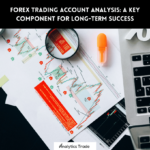What is the Stochastic Oscillator?
The Stochastic Oscillator is a technical indicator used to identify overbought and oversold conditions in the market. It was developed by George Lane in the 1950s and is based on the idea that when a security is trading at a high price, it is likely to experience a pullback. Conversely, when a security is trading at a low price, it is likely to experience a bounce. The Stochastic Oscillator is a momentum indicator that measures the speed and direction of price movements.
How to Use the Stochastic Oscillator in Currency Analysis
The Stochastic Oscillator is a popular tool for currency traders. It can be used to identify potential entry and exit points in the market. The indicator is based on the idea that when the price of a currency is trading at a high level, it is likely to experience a pullback. Conversely, when the price of a currency is trading at a low level, it is likely to experience a bounce.The Stochastic Oscillator is calculated by taking the current closing price of a currency and comparing it to the range of prices over a given period of time. The indicator then plots a line between 0 and 100. A reading above 80 indicates that the currency is overbought, while a reading below 20 indicates that the currency is oversold.
Interpreting the Signals
The Stochastic Oscillator can be used to identify potential entry and exit points in the market. When the indicator is above 80, it indicates that the currency is overbought and a pullback is likely. Conversely, when the indicator is below 20, it indicates that the currency is oversold and a bounce is likely.
Using the Stochastic Oscillator in Conjunction with Other Indicators
The Stochastic Oscillator can be used in conjunction with other indicators to confirm potential entry and exit points in the market. For example, traders may use the Stochastic Oscillator in conjunction with the Relative Strength Index (RSI) to confirm overbought and oversold conditions.
Using the Stochastic Oscillator with Support and Resistance Levels
The Stochastic Oscillator can also be used in conjunction with support and resistance levels to identify potential entry and exit points in the market. For example, if the Stochastic Oscillator is indicating that the currency is overbought, traders may look for a potential entry point at a support level. Conversely, if the Stochastic Oscillator is indicating that the currency is oversold, traders may look for a potential entry point at a resistance level.
Conclusion
The Stochastic Oscillator is a popular tool for currency traders. It can be used to identify potential entry and exit points in the market. The indicator is based on the idea that when the price of a currency is trading at a high level, it is likely to experience a pullback. Conversely, when the price of a currency is trading at a low level, it is likely to experience a bounce. The Stochastic Oscillator is calculated by taking the current closing price of a currency and comparing it to the range of prices over a given period of time. The indicator then plots a line between 0 and 100. A reading above 80 indicates that the currency is overbought, while a reading below 20 indicates that the currency is oversold.The Stochastic Oscillator can be used in conjunction with other indicators to confirm potential entry and exit points in the market. It can also be used in conjunction with support and resistance levels to identify potential entry and exit points in the market. By using the Stochastic Oscillator in currency analysis, traders can gain a better understanding of the market and make more informed trading decisions.For more information on how to use the Stochastic Oscillator in currency analysis, you can check out this Wikipedia article or watch this YouTube video.
Summary
The Stochastic Oscillator is a technical indicator used to identify overbought and oversold conditions in the market. It is calculated by taking the current closing price of a currency and comparing it to the range of prices over a given period of time. The indicator then plots a line between 0 and 100. A reading above 80 indicates that the currency is overbought, while a reading below 20 indicates that the currency is oversold.The Stochastic Oscillator can be used to identify potential entry and exit points in the market. It can also be used in conjunction with other indicators and support and resistance levels to confirm potential entry and exit points in the market. By using the Stochastic Oscillator in currency analysis, traders can gain a better understanding of the market and make more informed trading decisions.






Comments